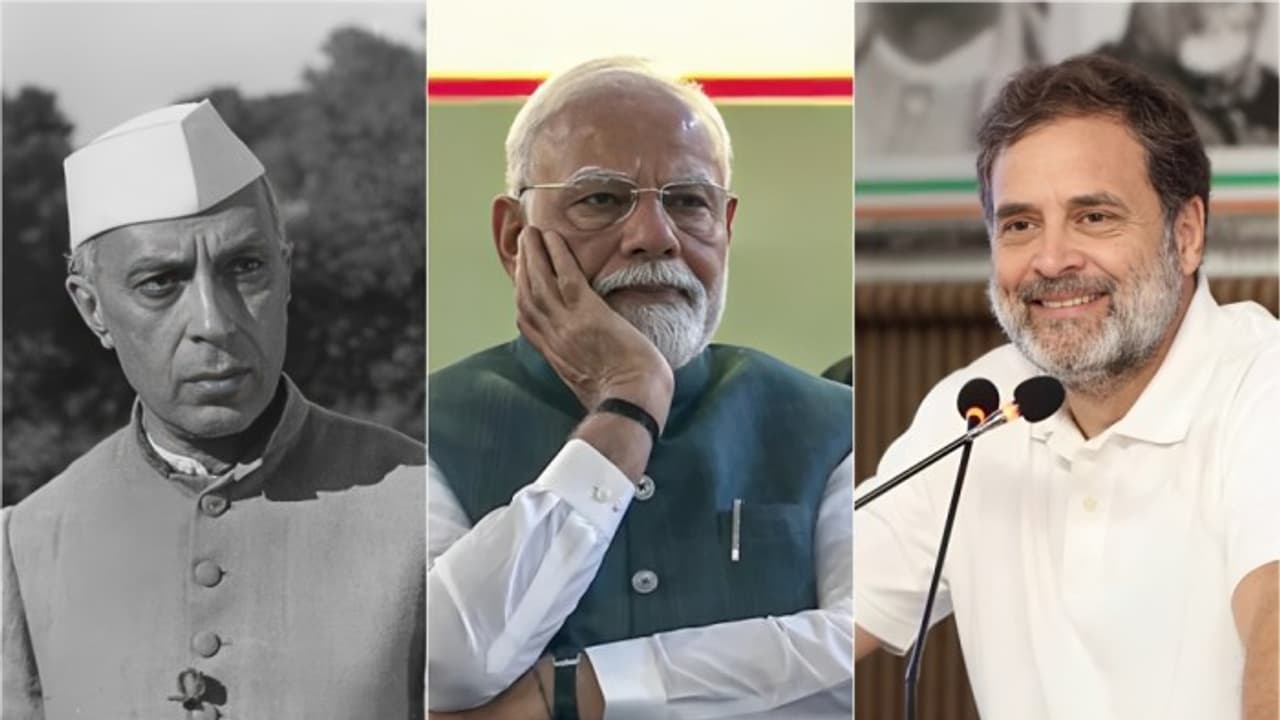Rahul Gandhi’s “Narendra-surrender” jibe at PM Modi over Operation Sindoor led BJP MP Nishikant Dubey to post Nehru’s 1963 letter to China. The BJP accused Congress of historic submission, reigniting India-China war memories.
BJP MP Nishikant Dubey on Wednesday cited a letter written by then Prime Minister Jawaharlal Nehru to Chinese Premier Zhou Enlai on 1 January 1963 to back his allegation that Nehru had effectively ‘surrendered’ to China after the 1962 war.

Dubey shared the letter on X after Congress leader Rahul Gandhi reignited a political storm by accusing Prime Minister Narendra Modi of ‘surrendering’ to pressure from the United States during Operation Sindoor. Here's BJP leader Dubey's X post:
What did Rahul Gandhi say
Rahul Gandhi claimed that after a phone call from US President Donald Trump, PM Modi 'gave in' and changed India’s posture during Operation Sindoor, which was launched in response to the Pahalgam terror attack in April 2025.
Addressing Congress workers in Bhopal, Gandhi had said, “When Trump called Modi ji, ‘Modi ji kya kar rahe ho, Narender-Surrender’, with ‘ji huzoor’, Narender ji obeyed. But in 1971, when the US Navy’s Seventh Fleet moved in, Indira Gandhi didn’t flinch. She split Pakistan anyway.” He added, “This is their character. The RSS-BJP leadership has always written letters of surrender since the Independence movement.”
BJP responds with Nehru’s 1963 letter to China
In a sharp response, BJP leader and MP Dr Nishikant Dubey took to X to post a declassified letter written by then Prime Minister Jawaharlal Nehru to his Chinese counterpart on 1 January 1963, shortly after the 1962 India-China war. Dubey claimed the letter reflected Nehru’s submission to China after the military defeat, calling it a “surrender.”
His caption read (translated):
“Do you know what surrender means, Rahul Baba? This is surrender. Your revered grandfather, the father of the so-called ‘Iron Lady’, wrote this letter after losing the war. He cried to the Chinese PM that they had occupied 20,000 sq km in the east, 6,000 sq km in the west, and taken 4,000 soldiers captive. Yet, we sent Sri Lanka’s PM to surrender on our behalf, awaiting your orders.”
What Nehru's letter said
Nehru’s 1963 letter to the Chinese Prime Minister, visible in the original images posted, is a diplomatic response to China’s December 1962 communication. Here are the key excerpts:
1. Acknowledgement of Chinese control in Ladakh
In the letter, Nehru admits that Chinese troops had entered Ladakh and advanced further in various areas. He describes these incursions without referencing any active Indian military pushback, which can be seen as an implicit acceptance of loss of ground.
“Still later, they had advanced still further,” Nehru writes, referring to the PLA’s movements post-war.
2. Engagement with China’s ceasefire proposal
Nehru refers to Zhou’s suggestion that both sides maintain their current military positions, a proposal that would effectively allow China to retain territory gained during the war.
“The only new suggestion in your present letter is that the Indian troops should stay in their present positions…”
Dubey argues this shows Nehru was willing to freeze the situation rather than demand full Chinese withdrawal.
3. Call for partial, not full, rollback
Nehru insists that for talks to proceed, China should vacate areas occupied after September 8, 1962, implicitly leaving earlier Chinese gains unchallenged.
“I think that at least the further aggression committed by your forces since the 8th of September 1962 should be removed.”
This, as Dubey claimed, indicates Nehru's readiness to accept earlier Chinese positions as the new normal.
4. Willingness to go to international court
The letter also expresses Nehru’s openness to take the boundary dispute to the International Court of Justice, rather than seeking a military resolution.
“If necessary, we would be prepared to refer these questions for decision… to the International Court of Justice.”
Dubey sees this as evidence of a soft diplomatic approach at a time when firm action was needed.
Rahul Gandhi vs BJP: Surrender narratives from 1962 to now
The BJP’s counterattack plays into a larger narrative it has pushed for years, portraying Nehru and Congress as weak on national security, especially regarding China. Dubey’s framing of Nehru's letter as “ghighiya kar likha gaya patr” (a whimpering plea) is in line with the BJP’s continued efforts to frame the 1962 war as a historic failure of Congress leadership.
As Parliament prepares for its Monsoon Session starting July 21, such exchanges are likely to fuel further debate between the Opposition and the ruling party on matters of defence, diplomacy, and legacy.


